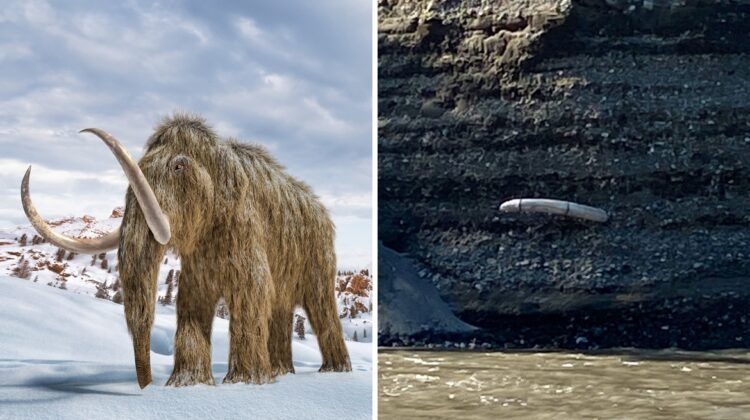
We don’t think we’ll ever see a mammoth tusk in the wild. They should be displayed in museums! However, according to University of Virginia researcher Adrienne Ghaly, you might just see one on the edge of a river bank in Alaska. Ghaly took a photo of a woolly mammoth tusk jutting from an embankment on the Koyukuk River near Coldfoot, Alaska, and shared it on Twitter. The ivory is buried beneath layers of rock and is now being held up by ropes to keep it from sliding into the river as the base deteriorates.
The internet has been captivated by the sight of a massive fossil on an otherwise typical riverbank; Ghlay’s tweet has alerted people to the fact that Alaska is rich in woolly mammoth tusks and remnants. The creature is thought to have died out around 4,000 years ago, and Alaska named it the state fossil in 1986, indicating its widespread occurrence.
The tusks of mammoths can reveal a lot about the creature’s life. They’re split along the center to investigate the chemical isotopes inside, much like tree rings are. The isotopes differ by area and can reveal how far a mammoth went, as evidenced by the discovery of a 17,000-year-old mammoth. It walked long enough to go around the world twice.
Finding mammoth tusks in Alaska isn’t uncommon, but it’s still a unique find. Coming across one can feel like finding gold if you’re not from the state or don’t visit regularly.
The internet was captivated by a photo of a woolly mammoth tusk protruding from an Alaskan riverbank.
An actual mammoth tusk protruding from the riverbank on the Koyukuk near Coldfoot Alaska. You can almost touch the #pleistocene #envhum pic.twitter.com/F0wwBJhIOQ
— Adrienne Ghaly (@avghaly) June 6, 2022
Adrienne Ghaly, a researcher (and tusk photographer), provided more information about the tusk.
An actual mammoth tusk protruding from the riverbank on the Koyukuk near Coldfoot Alaska. You can almost touch the #pleistocene #envhum pic.twitter.com/F0wwBJhIOQ
— Adrienne Ghaly (@avghaly) June 6, 2022
h/t: [Reddit]

Leave a Reply